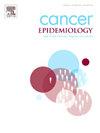高龄老人卵巢癌护理面临的挑战。
IF 2.4
3区 医学
Q3 ONCOLOGY
引用次数: 0
摘要
简介卵巢癌(OC)是妇女第八大常见癌症,预后较差,尤其是老年妇女。本研究旨在描述八十岁以上卵巢癌患者的情况,并研究净生存率(NS)在不同年龄段的差异:在这项基于人群的回顾性观察研究中,纳入了 1998 年至 2018 年间确诊的上皮性卵巢癌 IA 期至 IVB 期、年龄大于 18 岁的妇科癌症登记患者。未提供FIGO分期的患者被排除在外。患者分为三个年龄组:结果:在纳入的 721 名患者中:462人(64.1%)小于70岁,176人(24.4%)年龄在70-79岁之间,83人(11.85%)年龄在80岁或以上。与其他年龄亚组相比,≥80 岁患者的浆液性癌发生率呈下降趋势。随着年龄的增长,患者接受手术和化疗的可能性降低。73%的女性进行了讨论:与 70 多岁或更年轻的患者相比,高龄患者的最佳治疗效果较差,NS 也较低。应仔细评估体弱情况,以优化对高龄 OC 患者的护理。本文章由计算机程序翻译,如有差异,请以英文原文为准。
The challenge of ovarian cancer care in the oldest old
Introduction
Ovarian cancer (OC) is the eighth most common cancer in women, with a poor prognosis, particularly in older women. The aim of this study was to describe an octogenarian population with OC and to examine the differences in net survival (NS) according to age.
Material and methods
In this retrospective observational population-based study from a gynecological cancer registry, patients aged > 18 years with an identified epithelial ovarian cancer stage IA to IVB diagnosed between 1998 and 2018 were included. Patients with non-available FIGO stage were excluded. Patients were stratified into three age groups: <70, 70–79 and ≥80 years, then by OC stage (FIGO I-II, IIIA-IIIB, IIIC-IV). Sociodemographic and cancer-related variables were compared using univariate test (Khi²). The 5-year NS was calculated using the Pohar-Perme method.
Results
Among the 721 patients included: 462 (64.1 %) were younger than 70 years, 176 (24.4 %) were aged between 70 and 79 years, and 83 (11.85 %) were aged 80 years or older. Patients ≥80 years had a trend for lower rate of serous carcinoma than the other age subgroups. As age increased, patients were less likely to undergo surgery and chemotherapy. While 73 % of women <70 years received a combination of surgery and chemotherapy, the rate was 62 % among women 70–79 years and 27 % among women ≥80 years (p<.0001). When focusing on FIGO IIIC-IV stages, the 5-year NS rate for women <70 years was 45.1 % (95 % CI 39.1–52.0). For women 70–79 years, it was 25.9 % (95 % CI 18.6–36.1), and for those ≥80 years, it was 19.5 % (95 % CI 10.0–38.0) (p<.005).
Discussion
The oldest patients had less optimal treatment and a lower NS compared to patients in their seventies or younger. Frailty should be carefully assessed to optimize care in the oldest patients with OC.
求助全文
通过发布文献求助,成功后即可免费获取论文全文。
去求助
来源期刊

Cancer Epidemiology
医学-肿瘤学
CiteScore
4.50
自引率
3.80%
发文量
200
审稿时长
39 days
期刊介绍:
Cancer Epidemiology is dedicated to increasing understanding about cancer causes, prevention and control. The scope of the journal embraces all aspects of cancer epidemiology including:
• Descriptive epidemiology
• Studies of risk factors for disease initiation, development and prognosis
• Screening and early detection
• Prevention and control
• Methodological issues
The journal publishes original research articles (full length and short reports), systematic reviews and meta-analyses, editorials, commentaries and letters to the editor commenting on previously published research.
 求助内容:
求助内容: 应助结果提醒方式:
应助结果提醒方式:


